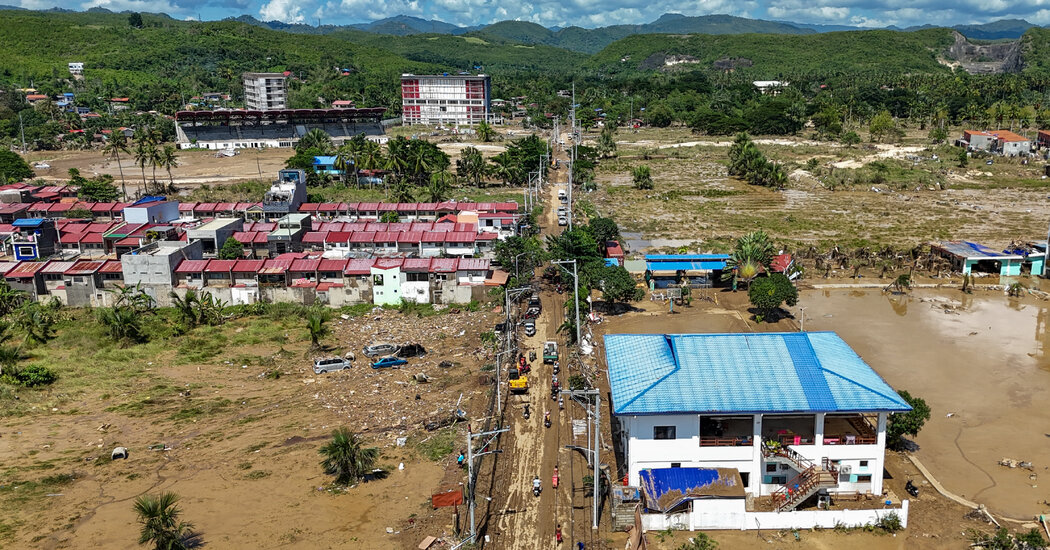The death toll from Typhoon Kalmaegi rose to 117, after the storm carved a dangerous path through the center of the Philippines and caused catastrophic flooding.
Rescue teams are searching tirelessly for dozens of people still believed to be missing, even though the typhoon had moved past the archipelago. Meanwhile another storm, named Fung-Wong, was approaching and expected to hit the Philippines late Friday or early Saturday, according to the local authorities.
Many victims of Typhoon Kalmaegi, also known as Typhoon Tino locally, had drowned or had been hit by fallen trees, electrocuted or buried by landslides, the nation’s civil defense office said. About 1.9 million people had been affected by the storm and are now either staying in evacuation centers or with friends and family.
Images shared on social media since Typhoon Kalmaegi first landed on Tuesday showed scenes of devastation, including families trapped on rooftops, as currents of brown water swept away cars in roads turned into rivers. Experts said the devastation exacerbated the emergency situation in a region that was hit by a 6.9 earthquake last month.
Cebu, the heart of commerce in the central Philippines, bore the brunt of the casualties, recording more than 70 deaths so far.
Emma Santillan, who lives in central Cebu with her husband and two children, said they quickly left their home before heavy rains inundated their street on Tuesday.
“We evacuated the night before and sought shelter at my office,” Ms. Santillan, 40, said by phone. “It was already raining hard when we evacuated.”
Ms. Santillan was pregnant with her third child when the earthquake hit last month, and she required an emergency C-section. “But very sad to say that the baby didn’t survive and died two days after delivery,” she said. “Now Cebu was hit with this.”
Her husband, Alex Santillan, who is still nursing a leg injury he sustained earlier, had wanted to stay behind to protect the family’s belongings but was eventually persuaded to go with them. “Thank God our house was not totally flooded, but the strong winds damaged our roof,” Ms. Santillan said.
The Office of Civil Defense’s deputy administrator, Bernardino Rafaelito Alejandro IV, said the death toll could still rise as the search-and-rescue effort continued.
“We are expecting this to increase,” he said on DZBB-AM radio in Manila. “The challenge now is debris clearing, and we need to double-time our efforts because the floodwaters really carried a lot of debris, including housing materials that were washed away.”
He called on survivors to try to get to “safe places” so they could be accounted for by the local authorities.
“We are prioritizing debris clearing. We’ve seen cars on top of each other, and we need to clear them while we push forward with relief items,” Mr. Alejandro said.
Emergency crews, he said, were also rushing to restore electricity, while additional military, coast guard and fire personnel have been dispatched to aid in the massive search-and-rescue effort.
Pamela Baricuatro, Cebu’s provincial governor, said on Wednesday that she had officially placed Cebu under a “state of calamity,” which triggers an immediate release of emergency funds.
“It was by far the worst flash flood by a typhoon in the history of Cebu,” she said on local television.
Meanwhile, first responders are also on standby for another storm, called Fung-Wong, that is projected to hit the central Philippines by the weekend.
“We are looking at its rain band, and it is forecasted to be very strong,” Mr. Alejandro, the civil defense official, said, adding that the authorities were preparing for the worst-case scenario.
The post Philippines Faces Grim Typhoon Aftermath as Another Storm Approaches appeared first on New York Times.




